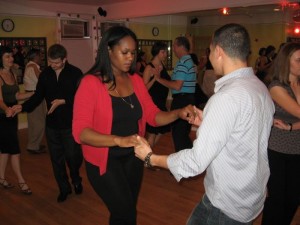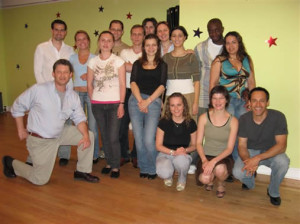
Dance classes in Brooklyn. Ray and Stephanie salsa dancing.
Salsa followers can be broken down into three types: 1)passive 2)active and 3)mischievous.
A passive salsa follower does what the leader wants. Only that, and nothing else. Take her into a cross body lead and she will follow, but with no styling at all. She follows all your salsa steps, but doesn’t add anything additional to the dance. Most beginner salsa dancers are passive followers.
An active salsa follower will add some flair. She will comb and whip her hair, do arm and hand styling, and shoulder shimmies. She is taking an active part in the salsa dancing. She is following just like the passive follower, but is adding her own flair. When you see a salsa dance class labeled as a women’s styling class, they are trying to turn passive followers into active followers.
A mischievous follower knows the step that you are leading her into, can do it if she wants to, but chooses not to. She does something else that works, but not exactly what you wanted. For example, if you lead a peek-a-boo step, instead of stopping when you want her to, she’d duck under and turn out. If you lead a copa with a turn and a half, she might keep spinning more than you expected. If she knows there is a break in the music, she will hit it even if you weren’t going to. In order to be a mischievous follower, you have to be very good at following and know the music very well.
When salsa dancing, a leader should be accommodating to all three types of salsa followers. If a woman has just started salsa dancing, she will most likely be a passive follower. If she has taken some salsa dance lessons for a few months she may have developed into an active follower. You find active followers at most salsa dance schools socials. If she has put her time in, practiced, taken lots of private salsa lessons, gone salsa dancing all over and really gotten good, she may be a mischievous follower.

